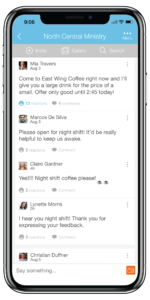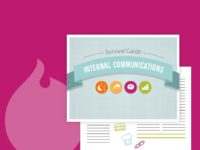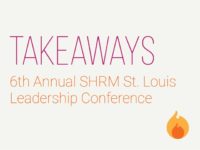Employee resource groups are a great way to connect healthcare employees and encourage innovation and inclusivity. With a communication tool like Bonfyre, your company can help these groups grow into thriving communities.
It can be tough for employees to make connections in a large healthcare company. Strong relationships at work can make us happier and more productive, but finding people whom we feel close to isn’t easy. Here’s where employee resource groups come in.
Employee resource groups (ERGs) are communities of employees that connect over similar interests, backgrounds, or a shared purpose. Commonalities that center around identity–like gender, race, ethnicity, or job position–are the strongest, and are the most likely to lead to lasting relationships.
ERGs aren’t just useful for employees, though. They also provide real benefits to the entire organization by driving engagement, inclusivity, and innovation. However, most companies fail to help ERGs thrive. Without the proper resources, it can be hard to ensure that all voices in an ERG are heard and that information is being seen and shared effectively.
Communication tools like Bonfyre remedy these issues by providing a centralized channel for employees to communicate. Bonfyre’s survey, recognition, and announcement tools make it easy for ERGs to collect feedback, recognize the efforts made by fellow members, and broadcast important information. All of this can be accomplished by employees without much interference from the company, keeping the close essence of a community intact.
Why healthcare companies should support employee resource groups
Providing a safe space for employees to connect and express themselves is undoubtedly the most important aspect of employee resource groups. Employee resource groups allow members to find opportunities for professional networking, mentorships, and friendships. Employees that participate in ERGs report being more “energized,” a term that means they feel more motivated and committed to achieving goals at work.
ERGs are also hotbeds for innovation, as they reduce barriers that may prevent change, such as hierarchies, established systems, and fear of punishment. They’re also typically communities that embrace diversity, and diversity itself is important for innovation.
In an article for HBR, Todd L. Pittinsky writes, “Different kinds of people will come up with different kinds of ideas, and the more variety, the better.” This is certainly true for ERGs. When employees who feel they are underrepresented have access to an ERG, voices that may normally have gone unheard are now given a platform to share ideas.
In this regard, ERGs are useful in preventing silo mentality, which occurs when departments don’t share information with others in an organization. ERGs bring employees from different ranks and departments together, breaking up silos and spurring cross-collaboration.
Furthermore, when companies take the time to listen to feedback generated by ERGs, they receive a better understanding of what the employee experience is like across various demographics. This information can, in turn, lead to organizational changes that promote higher employee engagement, lower turnover rates, and higher patient satisfaction, making ERGs beneficial for both employees and employers alike.
Bonfyre has the tools ERGs need to thrive
Bonfyre provides a digital channel for ERGs to rally around events and new initiatives,” he says. “This allows members to showcase their work and potentially mobilize new people within their ERG to join their specific cause–like events, campaigns, or organizational changes.
Bonfyre has an advantage over other communication tools in that it allows for multiple functions in one channel. These functions include sending out surveys and announcements, giving recognition to colleagues, accessing an events calendar, sharing information in group and one-on-one chats, and more. Bonfyre is also easily accessible on mobile devices, which is useful to remote, deskless, or shift workers who may normally miss out on information and events.
Several healthcare clients have used the Bonfyre platform for ERGs. A leading pharmacy benefits organization used Bonfyre for its six main ERGs, which contain more than 1,800 users. In an average month, these users opened ERG communities 2,200 times to share more than 200 pieces of content, which then received more than 270 user reactions.
If you were to take a look into one of the ERG communities on Bonfyre, you’d find a chat feed where videos, photos, and other content is shared by members in real-time.
Healthcare employees can access a calendar feature promoting upcoming events like general membership meetings, lunch and learns, happy hours, and more. An announcement may be made reminding employees of the date and time of an event. During or after the event, quick polls can be sent to ask employees if they have questions they’d like addressed or if they’d like to vote on their favorite topic from the meeting. An attendee can give a recognition badge to the event organizer to thank them for their effort and contributions. If a member isn’t able to attend, they can find pictures and updates from the event in the chat feed.
Here’s a more granular example of how ERGs use Bonfyre: an ERG that focuses on LGBTQ+ issues and awareness, ran a campaign called #SpiritDay18. Employees were encouraged to post selfies of themselves wearing purple to the Bonfyre community to help raise awareness of LGBTQ+ youth bullying, and those who participated were entered into a raffle. The campaign was a success and resulted in 2,000 opens–the most it had for the whole year–and users shared 20 posts with the hashtag.
These examples provide an overall glimpse of how Bonfyre can make communication easier, dynamic, and engaging for healthcare ERGs. Want to learn more about how you can use Bonfyre to support your organization’s employee resource groups? We’d love to show you.
Sign up for a free trial using the form below and we’ll reach out to you.










